Desktop virtualization has become a favorable option in desktop computing for organizations to optimize resources, simplify administration, enhance security and improve productivity. There are two common technologies to achieve desktop virtualization: virtual desktop infrastructure (VDI) and remote desktop services (RDS). While both these technologies have their own strengths and weaknesses, you need to choose the right solution for your desktop virtualization requirements based on your needs. vCloudPoint provides client access solutions, which allow organizations to interchangeably use the two technologies and organizations are flexible to integrate with other server management solutions for avoiding limitations of using a single technology or improving the overall performance of their implementation.
Know the differences between VDI and RDS
Physical Host Implementations
Multi-OS RDS
Implementation:
Install multiple operating systems on the shared host, and on each system, install vMatrix Server Manager and other applications, and create multiple user accounts.
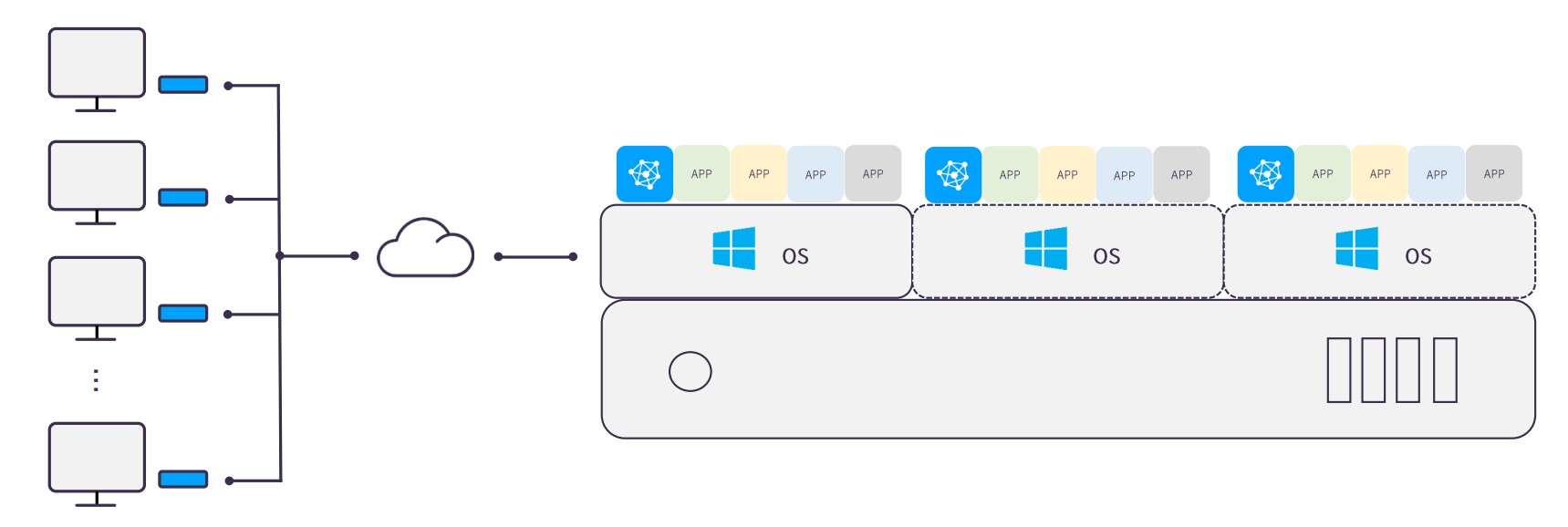
-
Benefits:
- In the event of a host system or software failure, you can restart the host and switch to the standby system to resume work immediately.
- You can use the systems as different templates and switch freely according to the different scenarios; for example, in a school computing lab implementation, you can use an operating system with language learning applications installed when you are having a language class.
Shared Storage
Implementation:
Instead of storing user data on disks of the shared host, user data are moved to an independent network attached storage device (NAS system for example).
Benefits:- Makes data storage more secure and independent; and you can protect and backup files regularly.
- Increases scalability of data storage; you can expand storage with ease.
- Allows you to share files and customize access permissions for optimal security.
- Enables anywhere and anytime access to files from any devices including mobiles, tablets, desktops and laptops.
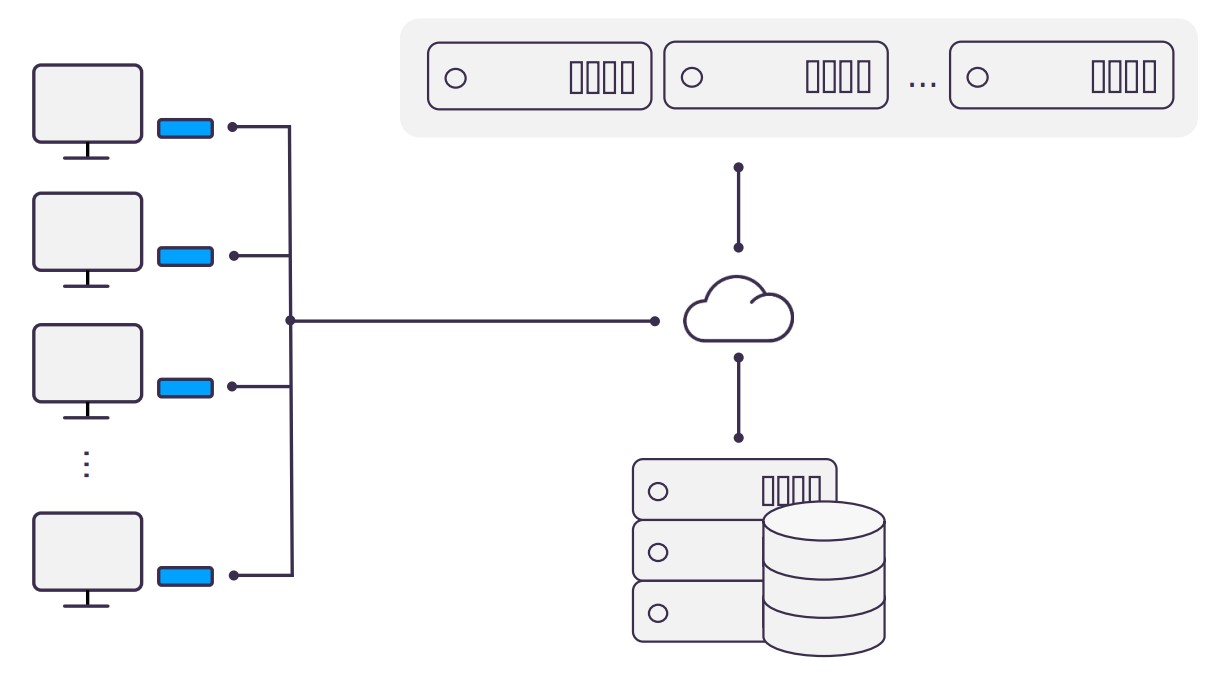
Redundancy:
Implementation:
This needs to be completed on the basis of shared storage deployment. After the basic deployment is complete, add a standby host with the same installations and configurations. You may useeither hot backup or cold backup for the standby host according to your actual needs. When using hot backup, you may also perform full-redundant storage. If you use hot backup, you need to install the corresponding hot backup software.
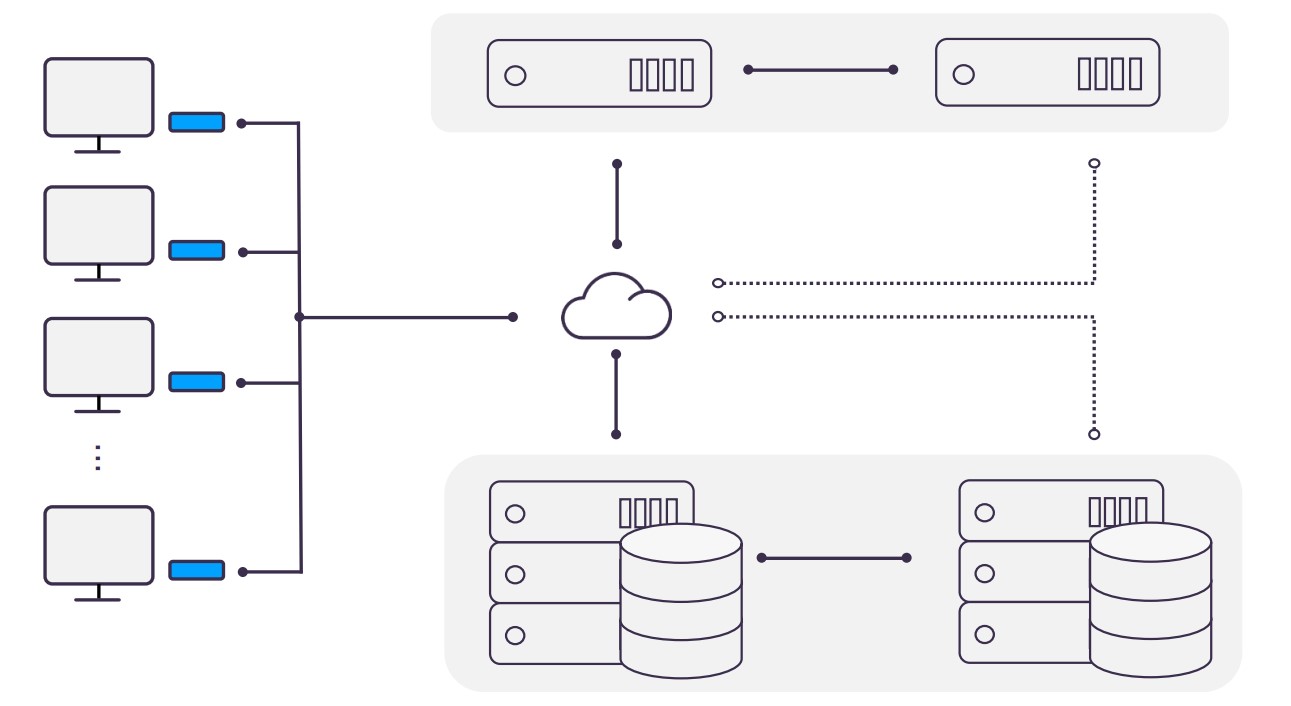
Benefits:Enables fault tolerance and backup to ensure business continuity in the event of a host failure.
Failover
Implementation:
When configuring hosts for multiple groups of users, configure them to be more powerful than actual needs. For example, when configuring 3 hosts for 120 users, each host can be configured to allow 60 users to run concurrently. When one of the hosts fails or is overloaded, users of this host can log into the other two hosts. This implementation is based on shared storage deployment and you need to create all user accounts on each host, or setup a domain.
Benefits:- Ensures business continuity in the event of a host failure.
- Enables load balancing by migrating user between hosts.
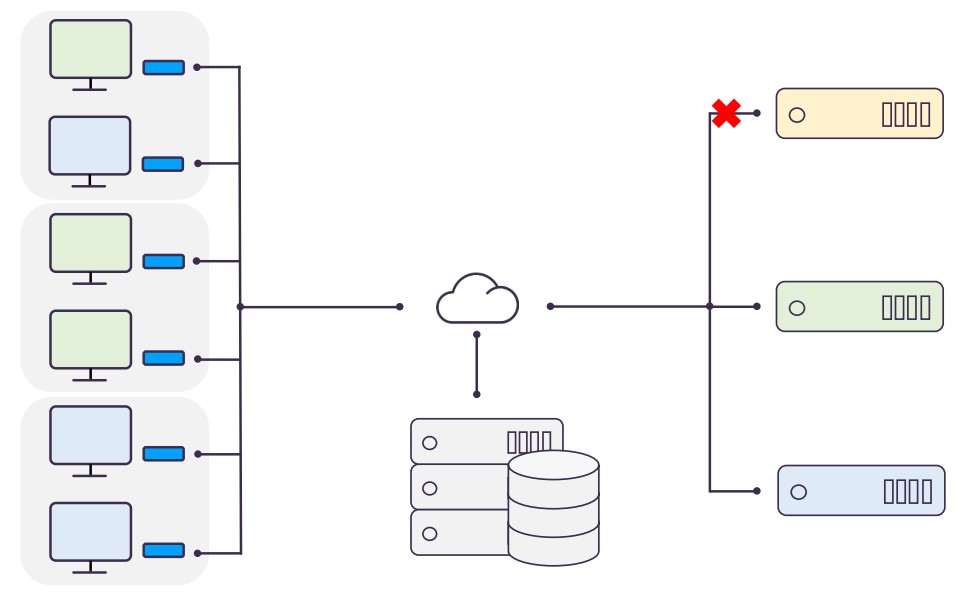
Virtual Host Implementations
1:1 Virtual Desktops
Implementation:
This needs to be completed on the basis of server virtualization. Create virtual machines (VMs) through any hypervisor such as XenServer, vSphere, KVM, Hyper-V, VirtualBox or Workstation; install vMatrix Server Manager in each VM, and these VMs will be acting as the vMatrix host. You do not need to create multiple user accounts. Each user will be using an independent VM through an administrator account. vMatrix Server Manager only serves as the connection broker and facilitates desktop transmission through DDP protocol. Management is to be done through the management center of the virtualization platform.
Benefits:- Fixes application compatibility problem in the multi-user environment.
- Fixes desktop personalization limitation in the multi-user environment.
- Fixes user isolation problem in the multi-user environment.
- When a VM fails, you can recover it in seconds by rolling the VM back to an earlier state through snapshots.
- Increases the flexibility and manageability of the entire IT infrastructure with virtualization.
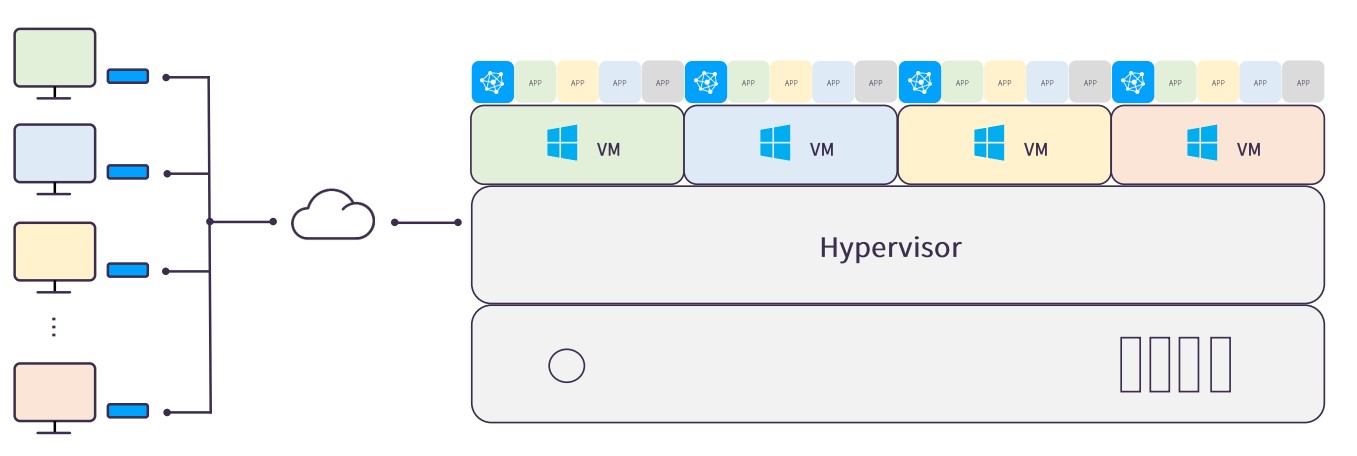
1: Many Virtual Desktops
Implementation:
This needs to be completed on the basis of server virtualization. Create virtual machines (VMs) through any hypervisor such as XenServer, vSphere, KVM, Hyper-V, VirtualBox or Workstation; install vMatrix Server Manager and create multiple user accounts in each VM. Users in the same VM instance will be sharing the same OS with an ordinary account. vMatrix Server Manager provides connection and management for users and devices connecting to the VM it resides. Server-side management is to be done through the management center of the virtualization platform.
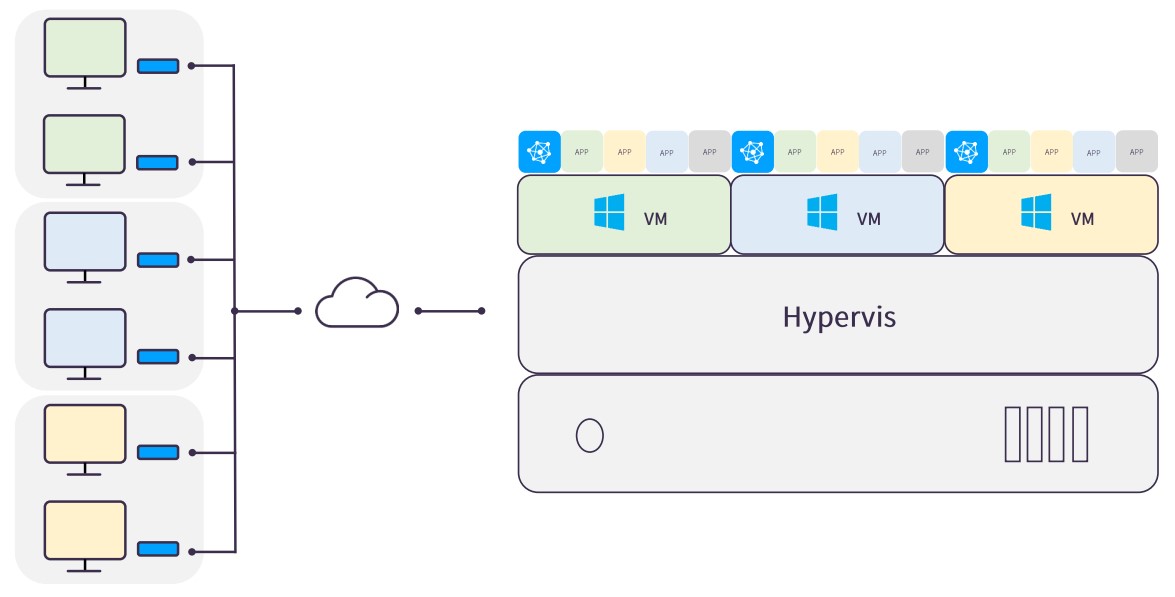
Benefits:- Allows customization to VM instances for different departments on a centrally managed server host.
- When a VM fails, you can recover it in seconds by rolling the VM back to an earlier state through snapshots.
- Increases the flexibility and manageability of the entire IT infrastructure with virtualization
Hybrid Virtual Desktops
Implementation:
This needs to be completed on the basis of server virtualization. Create virtual machines (VMs) through any hypervisor such as XenServer, vSphere, KVM, Hyper-V, VirtualBox or Workstation; install vMatrix Server Manager in each VM. Some users will be sharing the same OS instance with an ordinary account while some users will be running on an independent VM with an administrator account. vMatrix Server Manager provides connection and management for users and devices connecting through the shared pattern. Server-side management is to be done through the management center of the virtualization platform.
Benefits:- The coexistence of 1:1 and 1: many patterns allows different users to access desktop sessions tailored to be needs of specific engagements and customize with specific settings and applications as they actually need.
- When a VM fails, you can recover it in seconds by rolling the VM back to an earlier state through snapshots.
- Increases the flexibility and manageability of the entire IT infrastructure with virtualization
